TANDBERG Network Router D1320202
The TANDBERG Network Router D1320202 is a powerful and versatile networking device that offers a wide range of features and capabilities. With its advanced routing capabilities such as VLAN support, QoS, and firewall protection. The router is ideal for use in small and medium-sized businesses, and can be used to connect multiple devices such as computers, printers, and servers to the internet and to each other.
The D1320202 is also equipped with a number of security features, including stateful packet inspection, denial-of-service protection, and intrusion detection, which help to protect your network from malicious attacks. Additionally, the router supports Quality of Service (QoS) features, which allow you to prioritize traffic and ensure that critical applications such as VoIP and video conferencing receive the bandwidth they need.
TANDBERG Network Router D1320202
The TANDBERG Network Router D1320202 is a powerful and versatile networking device that offers a wide range of features and capabilities. With its advanced routing capabilities such as VLAN support, QoS, and firewall protection. The router is ideal for use in small and medium-sized businesses, and can be used to connect multiple devices such as computers, printers, and servers to the internet and to each other.
The D1320202 is also equipped with a number of security features, including stateful packet inspection, denial-of-service protection, and intrusion detection, which help to protect your network from malicious attacks. Additionally, the router supports Quality of Service (QoS) features, which allow you to prioritize traffic and ensure that critical applications such as VoIP and video conferencing receive the bandwidth they need.




















-
 1
1
-
 2
2
-
 3
3
-
 4
4
-
 5
5
-
 6
6
-
 7
7
-
 8
8
-
 9
9
-
 10
10
-
 11
11
-
 12
12
-
 13
13
-
 14
14
-
 15
15
-
 16
16
-
 17
17
-
 18
18
-
 19
19
-
 20
20
-
 21
21
-
 22
22
-
 23
23
-
 24
24
-
 25
25
-
 26
26
-
 27
27
-
 28
28
-
 29
29
-
 30
30
-
 31
31
-
 32
32
TANDBERG Network Router D1320202 User manual
- Type
- User manual
- This manual is also suitable for
TANDBERG Network Router D1320202
The TANDBERG Network Router D1320202 is a powerful and versatile networking device that offers a wide range of features and capabilities. With its advanced routing capabilities such as VLAN support, QoS, and firewall protection. The router is ideal for use in small and medium-sized businesses, and can be used to connect multiple devices such as computers, printers, and servers to the internet and to each other.
The D1320202 is also equipped with a number of security features, including stateful packet inspection, denial-of-service protection, and intrusion detection, which help to protect your network from malicious attacks. Additionally, the router supports Quality of Service (QoS) features, which allow you to prioritize traffic and ensure that critical applications such as VoIP and video conferencing receive the bandwidth they need.
Ask a question and I''ll find the answer in the document
Finding information in a document is now easier with AI
Related papers
-
 TANDBERG D1320203 User manual
TANDBERG D1320203 User manual
-
TANDBERG 3G GATEWAY 1 User manual
-
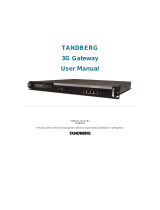 TANDBERG Hub User manual
TANDBERG Hub User manual
-
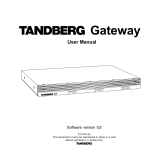 TANDBERG GW User manual
TANDBERG GW User manual
-
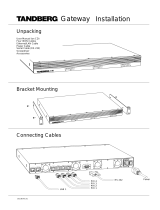 TANDBERG Network Router 6213 User manual
TANDBERG Network Router 6213 User manual
-
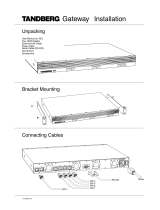 TANDBERG Gateway Installation guide
TANDBERG Gateway Installation guide
-
 TANDBERG D1392602 User manual
TANDBERG D1392602 User manual
-
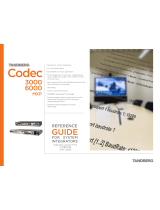 TANDBERG Codec 6000 MXP Reference guide
TANDBERG Codec 6000 MXP Reference guide
-
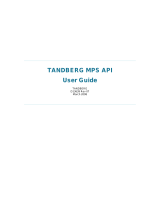 TANDBERG MPS API Interface D13639 User manual
TANDBERG MPS API Interface D13639 User manual
-
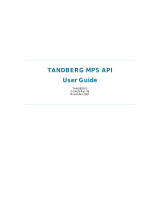 TANDBERG Network Card D13639 User manual
TANDBERG Network Card D13639 User manual
Other documents
-
Cisco Systems OL-7064-01 User manual
-
Wildix W04FXO Admin Manual
-
Roche KAPA UDI Primer Mixes User manual
-
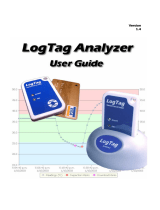 LogTag Recorders LogTag Analyzer Temperature Recorder User manual
LogTag Recorders LogTag Analyzer Temperature Recorder User manual
-
LogTag Analyzer User manual
-
Cisco TelePresence X8.1.1 Administrator's Manual
-
Dialogic SS7G21 User manual
-
LogTag UTRED30-Wifi Kit-1 Owner's manual
-
NXP MPC860 User guide
-
Lantronix Lantronix SLC 8000: Advanced Console Manager Quick start guide









































